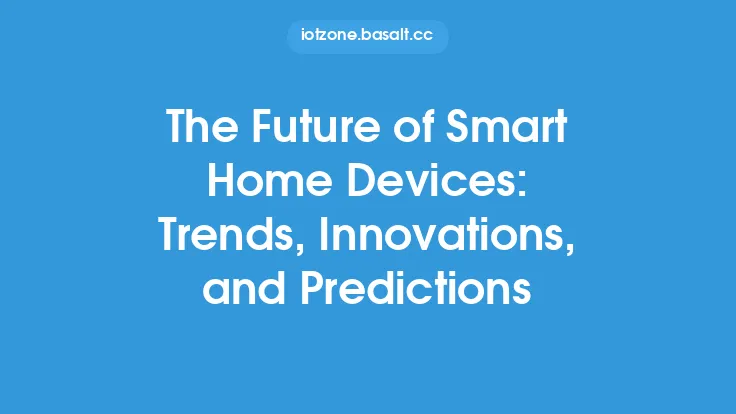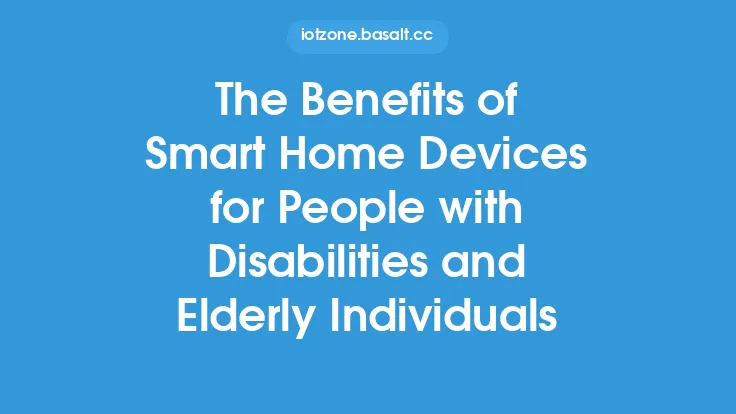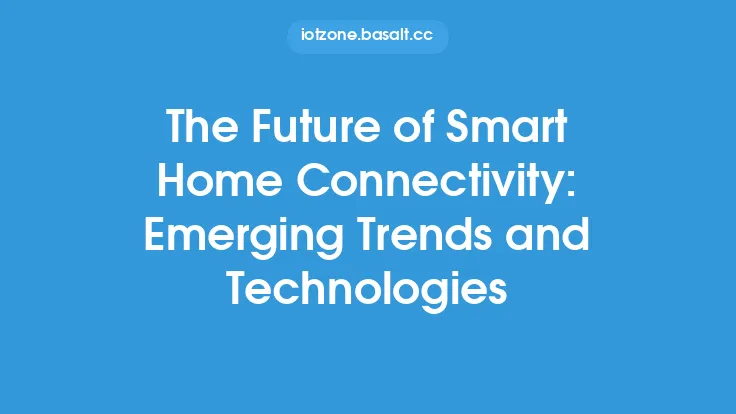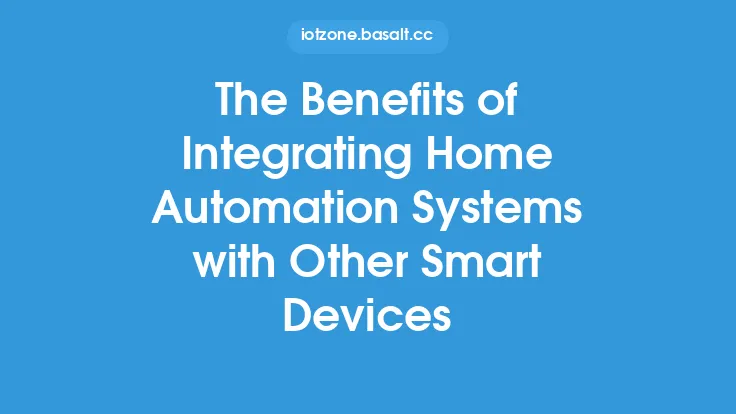The concept of smart home devices has been around for several years, but it's only recently that these devices have become an integral part of our daily lives. With the advancement of technology and the increasing demand for convenience, smart home devices have evolved to make our lives easier, more comfortable, and more enjoyable. In this article, we'll delve into the world of smart home devices, exploring their features, benefits, and the technology behind them.
What are Smart Home Devices?
Smart home devices are electronic devices that are connected to the internet and can be controlled remotely using a smartphone, tablet, or computer. These devices can be used to automate various tasks, such as turning on/off lights, adjusting thermostat settings, and monitoring security cameras. Smart home devices use wireless communication protocols like Wi-Fi, Bluetooth, or Zigbee to connect to the internet and communicate with other devices. They can also be integrated with voice assistants like Amazon Alexa, Google Assistant, or Apple Siri, allowing users to control them using voice commands.
Types of Smart Home Devices
There are various types of smart home devices available in the market, each designed to perform a specific function. Some of the most common types of smart home devices include:
- Smart lighting systems: These devices allow users to control the lighting in their homes remotely, adjusting brightness, color, and schedule.
- Smart thermostats: These devices can learn a user's temperature preferences and adjust the temperature accordingly, saving energy and improving comfort.
- Smart security cameras: These devices allow users to monitor their homes remotely, receiving alerts and notifications when motion is detected.
- Smart door locks: These devices allow users to control access to their homes, granting or denying access to specific individuals.
- Smart speakers: These devices can play music, set reminders, and control other smart devices in the home.
How Smart Home Devices Work
Smart home devices work by using a combination of sensors, actuators, and microcontrollers to collect data, process information, and perform actions. For example, a smart thermostat uses temperature sensors to collect data on the current temperature, and then uses this data to adjust the heating or cooling system accordingly. Smart home devices can also use machine learning algorithms to learn a user's preferences and adjust their behavior accordingly.
Benefits of Smart Home Devices
The benefits of smart home devices are numerous, and they can have a significant impact on a user's quality of life. Some of the most significant benefits of smart home devices include:
- Convenience: Smart home devices can be controlled remotely, allowing users to adjust settings and monitor their homes from anywhere.
- Energy efficiency: Smart home devices can help reduce energy consumption by optimizing lighting, heating, and cooling systems.
- Improved safety: Smart home devices can detect potential safety hazards, such as gas leaks or water leaks, and alert users accordingly.
- Increased comfort: Smart home devices can adjust temperature, lighting, and other settings to create a comfortable living environment.
Technical Requirements for Smart Home Devices
Smart home devices require a range of technical components to function, including:
- Microcontrollers: These are small computers that process information and control the device's behavior.
- Sensors: These are devices that collect data on the environment, such as temperature, humidity, or motion.
- Actuators: These are devices that perform actions, such as turning on/off lights or adjusting thermostat settings.
- Communication protocols: These are standards that allow devices to communicate with each other, such as Wi-Fi, Bluetooth, or Zigbee.
- Power supply: Smart home devices require a power source, such as batteries or a wired connection, to function.
Integration with Other Devices
One of the key benefits of smart home devices is their ability to integrate with other devices and systems. For example, a smart thermostat can integrate with a smart speaker, allowing users to control the temperature using voice commands. Smart home devices can also integrate with other smart devices, such as security cameras or door locks, to create a comprehensive smart home system.
Future of Smart Home Devices
The future of smart home devices is exciting, with new technologies and innovations emerging all the time. Some of the trends that are expected to shape the future of smart home devices include:
- Artificial intelligence: Smart home devices are expected to become more intelligent, using machine learning algorithms to learn a user's preferences and adjust their behavior accordingly.
- Voice control: Voice assistants are expected to become more prevalent, allowing users to control their smart home devices using voice commands.
- Increased connectivity: Smart home devices are expected to become more connected, integrating with other devices and systems to create a comprehensive smart home ecosystem.
Challenges and Limitations
While smart home devices offer many benefits, there are also some challenges and limitations to consider. Some of the most significant challenges include:
- Security: Smart home devices can be vulnerable to hacking and other security threats, compromising user data and privacy.
- Interoperability: Smart home devices from different manufacturers may not be compatible, making it difficult to integrate them into a comprehensive smart home system.
- Cost: Smart home devices can be expensive, making them inaccessible to some users.
Conclusion
Smart home devices are an exciting and rapidly evolving field, offering many benefits and opportunities for users. From convenience and energy efficiency to improved safety and increased comfort, smart home devices have the potential to transform the way we live and interact with our homes. As technology continues to advance, we can expect to see even more innovative and sophisticated smart home devices emerge, shaping the future of living and making our lives easier, more comfortable, and more enjoyable.





